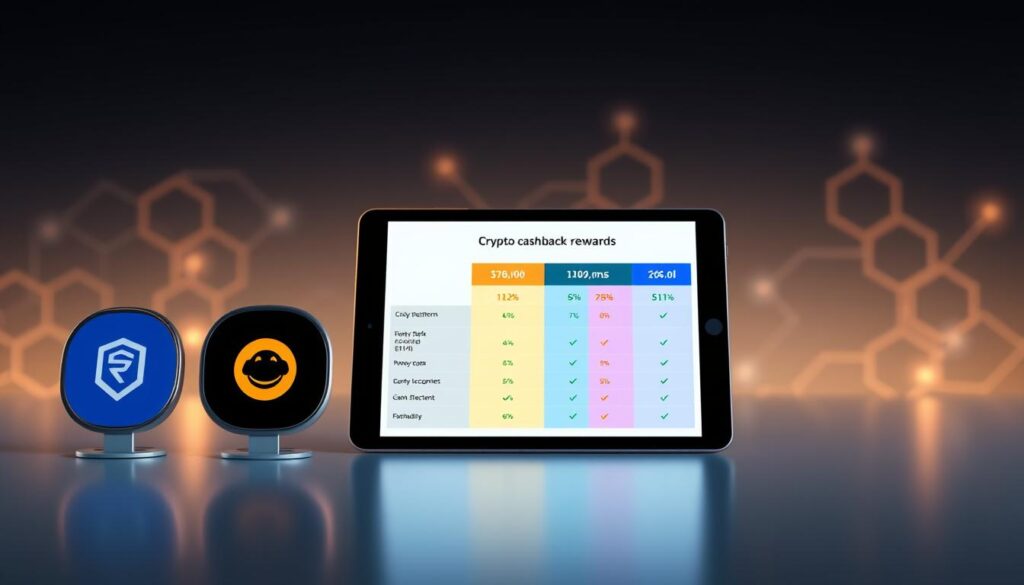Now Reading: Mastering Account Abstraction: A Crypto How-to Guide
- 01
Mastering Account Abstraction: A Crypto How-to Guide
Mastering Account Abstraction: A Crypto How-to Guide
Blockchain technology is evolving faster than ever, but user experience often lags behind. Traditional wallets force people to manage complex keys and rigid transaction rules. This friction has slowed mainstream adoption—until now.

Account abstraction flips the script by turning basic wallets into smart, customizable interfaces. Imagine paying gas fees with stablecoins or setting spending limits like credit cards. These upgrades solve pain points that once made blockchain interactions intimidating for newcomers.
Developers gain new tools to build self-custody solutions tailored to specific needs. Instead of one-size-fits-all wallets, teams can program recovery options or automate recurring payments. This flexibility bridges the gap between decentralized systems and real-world usability.
Our guide breaks down how this innovation works under the hood. You’ll learn why industry leaders call it the missing piece for Web3 growth. From simplified onboarding to enterprise-grade security models, we’ll explore practical applications reshaping digital ownership.
Key Takeaways
- Replaces rigid wallet structures with programmable features
- Enables gas fee payments using tokens instead of native coins
- Simplifies recovery options for lost credentials
- Supports customizable transaction rules and automation
- Accelerates adoption through familiar financial models
Understanding the Evolution of Blockchain Accounts
Blockchain’s early promise of financial freedom hit a wall: clunky interfaces and rigid systems. At the core of this struggle lie two distinct architectures – externally owned accounts (EOAs) and contract accounts. These frameworks shape how users interact with decentralized networks, but their limitations have become glaring as technology advances.
From Externally Owned Accounts to Contract Accounts
Externally owned accounts serve as the foundation for most blockchain interactions. Controlled solely by private keys, they enable basic transactions but operate like stone-age tools. Users must manually sign every action, from sending tokens to approving swaps. Contract accounts introduced programmable logic through smart contracts, yet they can’t trigger transactions independently – like a sports car without an ignition key.
The Limitations of Traditional Wallets
Legacy systems built on EOAs create three major hurdles:
- Seed phrase anxiety: Lose your 12-word code? Say goodbye to assets forever
- Zero automation: Every transaction requires manual approval
- Token tyranny: Need ETH for gas fees? Too bad if you only hold stablecoins
These constraints explain why only 3% of internet users actively engage with blockchain platforms. Contract accounts offered hope through customizable rules, but their dependence on EOAs for transaction initiation kept innovation in handcuffs. The stage was set for a revolution in digital ownership models.
Foundations of Account Abstraction
Digital ownership models face a critical bottleneck—static interfaces that can’t adapt to modern needs. Account abstraction redefines how blockchains manage identities by merging user control with programmable flexibility. This approach turns rigid structures into dynamic tools capable of evolving with user demands.

Defining Account Abstraction
At its core, account abstraction eliminates the technical divide between basic wallets and advanced smart contracts. Traditional systems force users to juggle multiple tools for different tasks. Now, a single programmable interface handles everything from authentication to transaction workflows.
These upgraded systems act like financial Swiss Army knives. Developers embed logic directly into wallets, enabling features such as:
- Custom transaction approval flows
- Multi-layered security protocols
- Automatic payment scheduling
The Role of Programmable Smart Wallets
Programmable smart wallets serve as the backbone of this innovation. Unlike conventional options, they execute code-based rules that adapt to specific scenarios. Want gas fees paid in USDC? Need biometric verification for large transfers? The wallet handles it without third-party apps.
This shift empowers teams to build solutions matching real-world habits. Retail apps can integrate spending limits, while enterprises deploy transaction rules mirroring corporate policies. Users gain control without sacrificing convenience—a balance previously unseen in blockchain interactions.
Exploring Account abstraction crypto for Enhanced Wallet Functionality
The next wave of blockchain adoption hinges on solving a critical problem: clunky interfaces that confuse everyday users. Traditional systems force people to navigate complex processes, but emerging solutions rewrite the rules of digital ownership.
Breaking Barriers in Digital Asset Management
Modern wallet designs now eliminate friction points that once deterred newcomers. Developers can integrate features like sponsored transaction fees, allowing businesses to cover costs for customers. One-click approvals replace multi-step signing processes, mirroring the simplicity of mainstream payment apps.
Security upgrades transform protection models. Biometric checks and multi-factor authentication replace vulnerable seed phrases. Time-based withdrawal limits add safeguards against unauthorized access, while hierarchical controls let families or teams manage shared assets securely.
These advancements enable customizable transaction flows tailored to specific needs. A retail app might automate recurring payments, while a corporate platform could enforce approval chains for large transfers. This adaptability bridges blockchain’s potential with real-world usability.
Industry leaders like Visa now rethink digital transactions using these principles. By blending programmable logic with intuitive interfaces, they create systems that feel familiar yet unlock decentralized capabilities.
Deep Dive into Smart Contracts and Custom Wallet Logic
Customizable transaction rules are revolutionizing how we interact with digital assets. Modern wallets now function like personalized financial assistants, executing complex operations through embedded smart contract logic. This shift transforms basic storage tools into dynamic management systems.

Integrating Custom Transaction Rules
Smart contracts enable wallets to operate like code-driven gatekeepers. Developers program conditions directly into the wallet’s architecture, creating tailored approval processes. Common rules include:
- Daily spending limits for specific tokens
- Automatic approvals for recurring payments
- Multi-signature requirements for large transfers
Batch processing demonstrates this power best. Users can approve multiple transactions simultaneously—swapping tokens, paying fees, and staking assets in one click. This mirrors traditional banking efficiency while maintaining blockchain’s security.
Advanced configurations go further. Teams set hierarchical access controls through if-then statements in the contract code. A corporate wallet might require CFO approval for transfers exceeding $10k, while personal wallets could trigger biometric checks for new device logins.
These systems learn from user behavior. Some automatically adjust gas limits based on network congestion, while others block suspicious transactions using predefined risk parameters. The result? Wallets that protect assets while adapting to individual financial patterns.
ERC-4337: Transforming Crypto Wallets
Ethereum’s ecosystem just unlocked a game-changing upgrade. ERC-4337, finalized in March 2023, reimagines wallet interactions without altering Ethereum’s core protocol. This standard introduces tools that merge flexibility with backward compatibility, letting developers innovate while preserving network stability.
Development and Key Features
Born from Ethereum Improvement Proposal 4337, this standard sidesteps hard forks by operating at the application layer. Its architecture revolves around three pillars:
- UserOperation Objects: Bundles transaction data and signatures into single executable units
- Bundlers: Network actors that process these units, prioritizing high-value operations
- Paymasters: Services covering gas fees in preferred tokens or fiat equivalents
These components interact through a dedicated transaction pool—an alternative to Ethereum’s main mempool. Bundlers mine UserOperations like traditional validators but optimize for maximum fee extraction, creating competitive efficiency.
Impact on Decentralized Applications
DApps now bypass old friction points. Users can sign transactions with familiar Web2 methods like email logins while maintaining self-custody. Subscription models become feasible as wallets auto-approve recurring actions without manual signatures.
Gas sponsorship reshapes onboarding. Apps cover initial fees to lower entry barriers, mimicking free trials in streaming services. Multi-step workflows condense into single clicks, reducing abandonment rates during complex processes like NFT minting.
This framework also enables hybrid security models. Developers balance convenience with protection—think time-delayed withdrawals or location-based access rules. Such features attract institutions seeking compliance-ready tools without sacrificing decentralization.
Implementing Account Abstraction Solutions in Practice
Building next-generation wallet systems requires merging security with flexibility. Developers now leverage tools like ThirdwebSDK to create programmable interfaces that adapt to user needs. Let’s explore how to transform theoretical concepts into functional solutions.

Step-by-Step Configuration and Deployment
Start by initializing your project with Thirdweb’s infrastructure. The SDK simplifies connection to EVM-compatible chains while handling core security audits. Configure custom parameters like gasless transactions or multi-signature rules during setup.
Deploy smart contract wallets using pre-built templates or tailored code. Set spending limits, automatic fee payments in stablecoins, or recovery protocols. Test logic flows in sandbox environments before mainnet launches.
Integrate meta-transactions to let users interact without holding native tokens. Sponsor fees for specific actions—like onboarding sequences—to reduce friction. Combine this with session keys for temporary access permissions during gaming or streaming activities.
Security remains paramount. Implement layered approvals where high-value transfers require multiple signatures. Use time-locked changes to prevent sudden protocol modifications. Thirdweb’s framework automatically updates components, ensuring compatibility across networks.
Real-world examples show these steps in action. A DeFi platform reduced drop-off rates by 68% after enabling gasless swaps. An NFT project boosted minting speed using batch transaction rules. These successes highlight how programmable tools reshape user experiences.
Enhancing Security and User Experience with Account Abstraction
Security and convenience often clash in digital systems, but programmable wallets rewrite this narrative. Modern solutions eliminate vulnerabilities like single-key dependencies while streamlining access for everyday users. Let’s explore how these systems balance robust protection with intuitive design.
Advanced Authentication Techniques
Traditional private keys get replaced with layered verification methods. Biometric scans using fingerprints or facial recognition add personalized safeguards. Device-based checks ensure only registered phones or hardware wallets initiate transactions.
Time-based rules create extra barriers against unauthorized access. Users might require email confirmations for transfers exceeding $1k or delay large withdrawals by 48 hours. These features mirror banking security models while maintaining decentralized control.
Social Recovery and Multi-Signature Features
Lost credentials no longer mean permanent lockouts. Guardians—trusted contacts or devices—can collectively verify identity to restore access. This social recovery method keeps ownership decentralized but user-friendly.
Multi-signature setups adapt to diverse needs:
- Families requiring 2/3 approvals for joint savings
- Businesses mandating CFO+CEO sign-offs for treasury moves
- DAOs using threshold signatures for protocol upgrades
These tools transform wallets into adaptable security hubs. By blending customization with failsafes, they make self-custody accessible without compromising protection.
Comparative Insights: EOAs vs. Contract Accounts
Blockchain’s account structures have long dictated user capabilities through technical constraints. Two models dominate this space: externally owned accounts (EOAs) and contract accounts. Each serves distinct purposes but comes with trade-offs that shape blockchain interactions.
Strengths and Weaknesses Unveiled
EOAs operate like digital wallets controlled by private keys. They excel at basic tasks:
- Simple token transfers between users
- Lower gas fees for straightforward transactions
- Direct interaction with blockchain networks
Contract accounts introduce programmable logic through smart contracts. Their capabilities include:
- Automated payment schedules
- Custom security protocols
- Multi-step transaction workflows
EOAs struggle with inflexibility. Users can’t set spending limits or recover lost keys. Contract accounts depend on EOAs to initiate transactions, creating complex dependencies. This forces developers to juggle two systems for advanced features.
Modern solutions merge these models. Programmable wallets now handle both transaction initiation and execution. Users enjoy EOA-like simplicity with contract-level customization—no more choosing between power and usability.
Navigating Challenges and Adoption Barriers
Innovation often meets resistance before reaching mainstream use. While programmable wallets unlock new possibilities, developers face hurdles when implementing these systems at scale.
Technical Complexities for Developers
Building secure smart wallets demands expertise in multiple disciplines. Teams need advanced knowledge of gas optimization and authentication flows – skills that remain scarce in Web3. A single coding error could lock users out permanently or expose funds.
Ecosystem adoption requires coordination across fragmented networks. Wallets, dApps, and infrastructure providers must all support standards like ERC-4337. Without unified protocols, users interact with inconsistent experiences across platforms.
Ensuring Cross-Chain Compatibility
Interoperability remains a critical pain point. Different blockchains use unique architectures, forcing developers to rebuild features for each network. Solutions like EIP-7702 aim to set common ground, but progress depends on industry-wide collaboration.
The path forward requires balancing innovation with practicality. As more teams developers build on these protocols, shared toolkits and security audits will accelerate adoption. Only through collective effort can programmable wallets reach their full potential.
FAQ
How do externally owned accounts differ from contract accounts?
Externally owned accounts (EOAs) are controlled by private keys and lack programmable logic, while contract accounts operate via code. This distinction limits EOAs in flexibility compared to smart contract-driven wallets.
Why is programmable logic critical for modern wallets?
Programmable smart wallets enable features like automated payments, fee sponsorships, and transaction batching. These reduce manual steps, enhancing efficiency for decentralized applications and users.
Can ERC-4337 improve cross-chain compatibility?
ERC-4337 introduces a mempool for user operations, allowing standardized transaction handling across EVM chains. This simplifies interoperability but requires consistent protocol adoption for full cross-chain support.
What security risks arise with social recovery features?
While social recovery reduces reliance on single private keys, improper implementation can expose backup mechanisms. Multi-signature setups and encrypted backups mitigate risks without compromising accessibility.
How does account abstraction simplify gas fee management?
Users can delegate fees to third parties or pay with tokens like USDC instead of native coins. Apps like Argent and Safe leverage this for seamless onboarding, removing upfront crypto requirements.
Are there limitations to custom transaction rules?
Overly complex logic can increase smart contract vulnerabilities. Audits and modular design, as seen in OpenZeppelin’s libraries, help balance customization with security for decentralized networks.
What challenges do developers face with ERC-4337 adoption?
Integrating paymasters, signature aggregators, and bundlers demands new infrastructure. Teams like Stackup and Biconomy provide tools to streamline deployment but require learning updated SDKs.
Can traditional wallets support account abstraction?
Legacy wallets like MetaMask rely on EOAs, limiting built-in support. However, Layer 2 solutions like StarkNet enable hybrid models, allowing gradual migration without abandoning existing setups.












